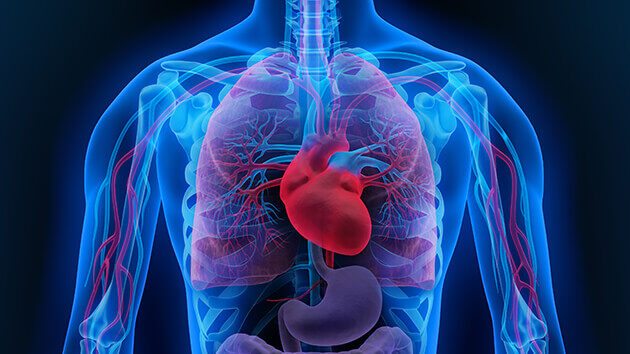Heart Attack and Cardiac Arrest — Understanding the Difference

Though many people use the terms “heart attack” and “cardiac arrest” interchangeably, the two are not the same. They both involve heart function, with key differences.
A heart attack occurs when blood flow to the heart is blocked. It’s a circulation problem and can cause damage to the heart muscle, but usually the heart doesn’t stop beating.
Cardiac arrest is when the heart suddenly stops. It’s an electrical problem and can result in death within minutes without quick medical intervention. If the heart stops, it can’t pump blood to the brain, lungs and other organs. Breathing stops, and the person becomes unconscious.
The two conditions can be related. A heart attack may be a reason for cardiac arrest or can increase the risk of cardiac arrest, said Ellen Wang, DO, a cardiologist at Columbia Memorial Health. Picture a Venn diagram, she said, with a smaller “heart attack” circle as part of the larger “cardiac arrest” circle.
Causes of cardiac arrest
There are many causes of cardiac arrest. Approximately 350,000 people die from cardiac arrests each year in the United States.
Most cardiac arrests occur when a diseased heart’s electrical system malfunctions and causes an abnormal life-threatening heart rhythm such as ventricular tachycardia or ventricular fibrillation. Cardiac arrests can also be caused by extreme slowing of the heart’s rhythm, known as bradycardia.
Among other potential causes are a thickened heart muscle, electrolyte abnormalities, drug overdoses, poisoning, electrocution, or lightning strikes, Wang explained. It’s possible to survive a cardiac arrest if the heartbeat is restored, such as through cardiopulmonary resuscitation (CPR) or use of an automated external defibrillator, known as an AED, a device that administers an electric shock to the heart.
“It’s like restarting a computer, and it comes back on,” Dr. Wang said.
How to spot heart attacks
Heart attacks, on the other hand, can start with mild symptoms or they can be immediate and intense. They can happen when plaque, which slowly builds up in the coronary arteries, narrows an artery and blood flow to the heart muscle is greatly reduced or cut off completely. A heart attack can also happen quickly when a piece of plaque in a coronary artery breaks off and a blood clot forms around the plaque. The blood clot can block the blood flow through the artery, Dr. Wang pointed out.
The faster someone receives medical attention during a heart attack, the more likely it is blood flow can be restored. Delays in getting to a hospital can increase the chances of increased damage to the heart muscle and eventual heart failure.
“Time is muscle, time is brain. Time is of the essence,” Dr. Wang warned.
Heart attack symptoms can range from shortness of breath to chest pain so severe it feels like an elephant sitting on the chest. Some people report pain on their left side that shoots down their arm, but Dr. Wang noted pain can be present on either side of the body with a heart attack.
Nausea and cold sweats may occur. Symptoms can differ in men and women, though chest discomfort or pain is the most common symptom for both. Women may report feeling as though a tight bra is squeezing their chest, according to Dr. Wang.
Ways to help
When a person is in distress with a heart attack or cardiac arrest, call 911 to get professional medical help on the way.
If a cardiac arrest takes place outside of a hospital a friend, relative or bystander can assist before medical help arrives by performing CPR or by shocking the heart using an AED, which are now present in many public places. Either procedure may save a life.
If you aren’t trained in administering CPR with breaths, you can still perform simple hands-only CPR. Push “hard and fast” with both hands in the center of the chest, Dr. Wang said. “You start taking over the work of the heart.”
Cardiac arrests can happen anywhere. Despite some highly publicized cases, fewer cardiac arrests are seen today among athletes during sports competitions or practices, Dr. Wang noted. That’s because of preventive screening for pre-existing heart conditions in sports programs, even for high schoolers and younger children.
Preventive care is something cardiologists focus on for patients of all ages, Dr. Wang added. Seeing a cardiologist can help prevent a heart problem from worsening and help with manage chronic heart conditions.
“We do our best work in preventive care,” she said. “We will help you at any stage. That’s what we’re here for.”